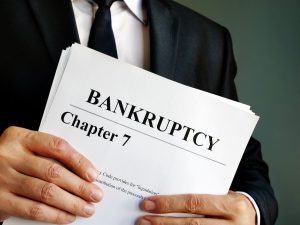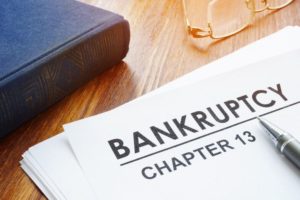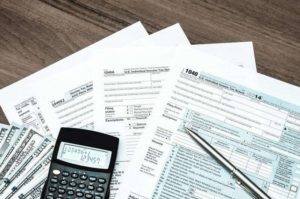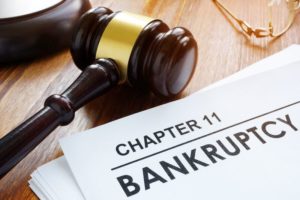Content Reviewed by: Dave Gormley •
February.28.2020 Vertified Content
Feb 28, 2020 | Read Time: 6 minutes
Sometimes when people come into our Waldorf or Lexington Park office they know exactly what type of bankruptcy they want to file. Other times a person just comes in to find out what options they may have.
During your initial consultation we may even find that deciding what is the best bankruptcy option is a tough decision.
While you can’t just read an article and figure out what type of bankruptcy you should file, having a basic understanding of the different types of bankruptcy is still a necessary first step in the decision making process.
To help you get a better understanding of the different types of bankruptcy this article will give you an overview of some of the different Chapters of the Bankruptcy Code.
Article Contents
Chapter 7 Bankruptcy: Understanding Liquidation Process in Maryland
The most likely options for someone filing for bankruptcy are Chapter7 or Chapter 13.
Usually when someone says they want to file for bankruptcy they are thinking of Chapter 7. You can think of this as a straight bankruptcy. In Chapter 7 Liquidation Bankruptcy you are typically asking that you debts get wiped out without paying anything back.
You can think of Chapter 13 as a payment plan bankruptcy. In a Chapter 13 Reorganization Bankruptcy you are paying back some or all of your debts back over a 3 to 5 year period.
To qualify to file for a Chapter 7 you need to jump through some hoops. One of goals of the Bankruptcy Reform Act of 2005 was to push people into at least paying back some of their debts in Chapter 13.
First you need to show that your household income is below the medium income for Maryland and you need to pass a means test. You also need to be able to show that you income is less or not much more than your basic living expenses.
Once you jump through these hoops you next need to see what assets you are aloud to keep when you file for a Chapter 7.
One of the reasons a Chapter 7 is referred to as a Liquidation Bankruptcy is because if you have an asset that isn’t protected by an Exemption the Trustee will take that asset and sell it to payoff some of your debts. If you have lived in Maryland for 2 years what you can keep or Exempt is set forth in Maryland Law.
If you have lived in Maryland less than 2 years what you can Exempt may be controlled by the laws of the State where you used to live. Exemptions can tell you something about a State. In Maine there is an exemption for firewood and heating fuel. In Oklahoma you can exempt a 2 bridles, 2 saddles, 2 horses and 100 chickens.
Maryland’s exemption aren’t so interesting. I suppose when lawyers from other States look at our exemptions they think that all we care about is money.
Grossly oversimplifying things, Maryland’s exemptions let you protect about $12,000 of assets. This is broken down into categories. $1,000 is for clothing, household goods and furnishings, $5,000 is for real property and personal property and $6,000 is for property of any kind.
Maryland also has a Homestead Exemption that lets you protect around $23,0000 in equity in your principal residence. (this number is adjust each year) Maryland also lets you keep most types of retirement accounts.
There are other exemptions as well, but these are the most commons ones people use. This may not sound like much but the dollar amounts may go father than you think. For instance with you car you are typically going to use the private party value and subtract out what you owe.
So you really are looking at what an asset could sell for, not what you paid for it.
Chapter 13 Bankruptcy: Payment Plan Options and Qualifications
To qualify for a Chapter 13 Reorganization bankruptcy you need to have income. Your debts must be below the Chapter 13 debt limits.
For the year 2017 your unsecured debts need to be less than $394,725 and your secured debts must be less than $1,184,200. (These amounts are revised each year in April.)
In a Chapter 13 you need to pay back at least some of your debts back over a 3 to 5 year period.
When you file a Chapter 13 you propose a payment plan. You start paying this amount to a Trustee the month after you file. The payment due date is the day of the month you filed your case.
The amount you will have to payback is determined by a number of tests. The first is the disposable income test. This is the money you have left over after you have paid what the bankruptcy code considers to be reasonable expenses.
Your plan needs to also pass the Chapter 7 liquidation test. Remember those Chapter 7 Exemptions? If you have assets that wouldn’t be protected in a Chapter 7 your Chapter 13 plan must at least pay back what the unsecured creditors would have gotten in that Chapter 7.
Your plan also needs to be high enough to pay any priority taxes and any arrears you have on secured debts like a mortgage.
One of the most common reasons to file for a Chapter 13 is stop a foreclosure so someone can save their house. In this type of case your plan payment needs to cure the arrears on your mortgage. The arrears are the payments you are behind on and fees that have built up.
Once your bankruptcy petition is filed you need to also start making the regular mortgage payment that come due. These are called the post petition payments. The plan payments also need to pay back some of your unsecured debts like credit cards.
The Other Chapters
While these are the most typical types of Bankruptcy there are other types as well. Below we will also touch on Chapters 9, 11, 12 and 15. Rather than go in numerical order we will cover these from the most common to the least common. These Chapters are mainly for businesses or special situations.
Chapter 11 Bankruptcy Explained: Corporate Reorganization and Debt Restructuring
During a bankruptcy consultation sometimes I will be asked about some other Chapters of the bankruptcy code. Most typically this question is about a Chapter 11.
Chapter 11 is a much more complicated and expensive type of Reorganization Bankruptcy. It is primarily geared towards large corporations or businesses. Next time you hear about some retail chain filing for bankruptcy you most likely will notice that it is a Chapter 11 that they filed.
But remember the Chapter 13 secured and unsecured debt limits? If you have to do a Reorganization Bankruptcy and are over those limits you will have to file a Chapter 11.
Chapter 12 Bankruptcy: Specialized Relief for Family Farmers and Fishermen
Chapter 12 is a reorganization bankruptcy for Family Farmers and Fisherman. You would think that this might be a fairly common type of filing in Southern Maryland, but it really isn’t.
Basically a Chapter 12 is just a Chapter 13 with higher unsecured and secured debt limits. The idea is to let farmers and fisherman avoid the expense and hassle of a Chapter 11 by increasing the debt limit to over 4 million dollars.
Since the farms in Southern Maryland aren’t that big and the fisherman don’t have huge boats they may still be able to just do a Chapter 13 and not need to file a Chapter 12 to take advantage of the higher debt limit.
Understanding Chapter 9 Bankruptcy: Municipal Debt Resolution
The other type of Bankruptcy you may hear about in the news is Chapter 9. This type of bankruptcy is for Municipalities. Probably the one most people remember is Detroit’s. When you hear Municipality you probably think of a city.
But the way the Bankruptcy Code defines this term includes Counties, School Districts and other political subdivisions of a State. Because of this broad definition this type of bankruptcy occurs more often than you might think.
Chapter 15 Bankruptcy: Cross-Border Insolvency Solutions
The least common type of Bankruptcy is a Chapter 15 Cross Border case. This type of case is typically used to manage the proceedings necessary for a company that has filed for bankruptcy in another Country but has assets in the United States.
Next Steps
Want to know more? Discover what you need to know about bankruptcy in Maryland. Click here to see our Free Legal Consumer Guide to Maryland bankruptcy cases and get answers to your questions today. Know your options. Be informed. Protect yourself.
Need a bankruptcy lawyer? Please contact us for a consultation today if you need a Maryland bankruptcy lawyer for your bankruptcy case.
Like our blog? Subscribe to our email newsletter and stay informed!









